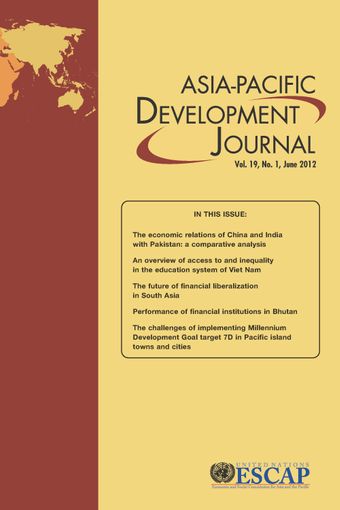-
The future of financial liberalization in South Asia
- Source: Asia-Pacific Development Journal, Volume 19, Issue 1, Aug 2012, p. 63 - 96
-
- 29 Aug 2012
Abstract
This paper overviews financial liberalization in three South Asian countries — Bangladesh, India and Pakistan — in order to derive lessons for future reforms. It investigates how freeing domestic financial markets, improving capital account convertibility, and restructuring regulations have impacted the process of financial liberalization in South Asia. The paper shows that the capital account was most liberalized in Pakistan, and that Bangladesh had the least market development of the three countries under consideration. The study also reveals that of the two similar-sized countries (i.e. Bangladesh and Pakistan), Pakistan had experienced several financial crises that had required “external rescue”. Bangladesh, in contrast, needed external rescue only once. India did better than Pakistan and Bangladesh, most likely because it followed a strategic plan according to which full capital account liberalization followed the deepening of domestic markets and improvements to government finances. The experience of the global crisis validated the Indian strategy and demonstrated that foreign entry, while beneficial, cannot resolve all issues. We conclude that deepening domestic markets and better domestic and international regulation are necessary prerequisites for full convertibility, and that these preconditions will be best met if future liberalization is adapted to domestic needs such as financial inclusion, infrastructure finance, and market deepening.
© United Nations





